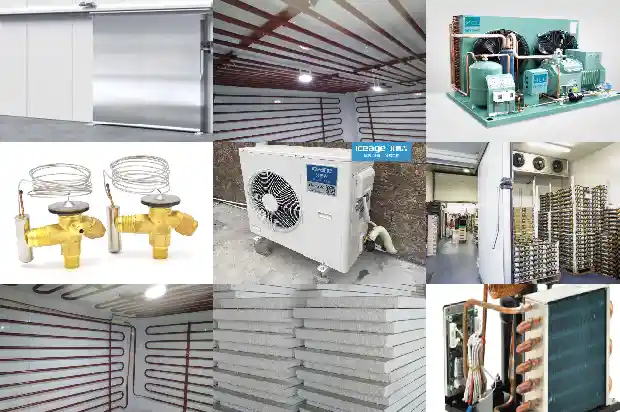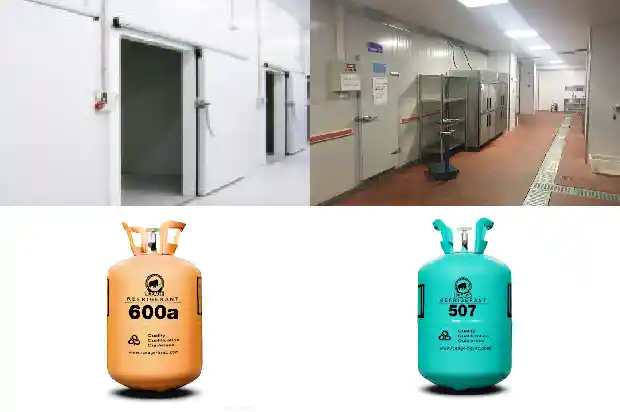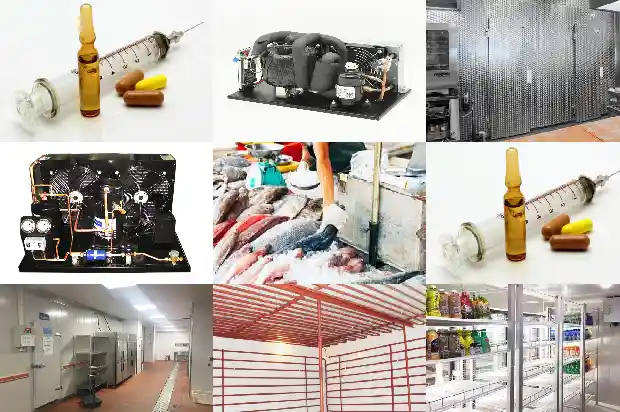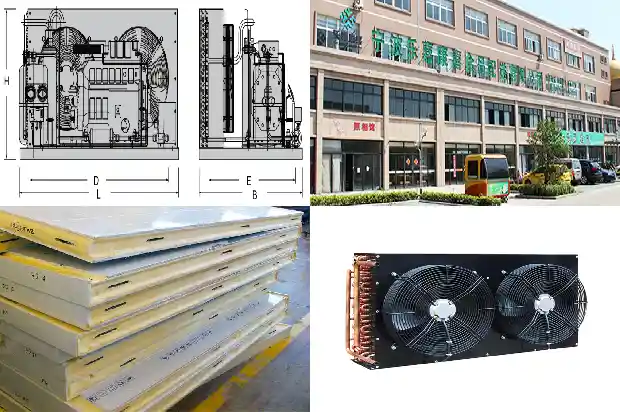Common Faults in Refrigeration Systems and Handling Methods
2025-02-26
- Frost formation on the compressor cylinder head
- Evaporator liquid return: Adjust the opening degree of the expansion valve to increase the superheat of the refrigerant return gas.
- Excessive refrigerant dissolved in the oil separator.
- High discharge pressure, high - low pressure controller activation
- Non - condensable gas in the system: Release air at the highest point of the exhaust pipe.
- Condenser fouling or dust accumulation: Clean the condenser.
- Insufficient cooling water volume: Take measures to increase the water volume and improve the working environment of the condenser.
- Excessive refrigerant: Remove the excess refrigerant.
- Insufficient opening of the exhaust pipeline: Fully open the relevant valves.
- Incorrect setting or damage of the high - low pressure controller: Adjust or replace the high - low pressure controller.
- Low discharge pressure
- Serious leakage in the exhaust pipeline or compressor exhaust valve plate: Replace the valve plate and repair the leakage in the exhaust pipeline.
- Improper adjustment or failure of energy regulation: Correctly adjust the energy mechanism.
- Excessively high discharge temperature, operation of the temperature protection module
- Part - load operation: Adjust the operation control process of the compressor to ensure suitable operating conditions.
- Low suction pressure: Refer to "low suction pressure fault" for details.
- Short - circuit of the compressor stator winding: Repair or replace the compressor motor.
- Damage to the temperature protection module: Replace the temperature protection module.
- Low suction pressure
- The expansion valve opening is too small or the flow hole is blocked by ice: Targetedly eliminate the expansion valve fault.

- Evaporator fouling: Clean the evaporator.
- The suction valve is not fully opened: Fully open the suction valve.
- Blockage in the liquid pipe, insufficient opening of the valve on the liquid pipe, or filter blockage: Remove the blockage and fully open the valve.
- Insufficient refrigerant charge: Check if the system is leaking and replenish the refrigerant.
- Excessive lubricating oil: Check the lubricating oil system to make it normal and drain the excess oil.
- Abnormal noise in the compressor
- Valve plate or foreign object breaks and falls into the cylinder: Remove the foreign object and repair the damaged parts.
- Oil slugging due to excessive lubricating oil: Stop the machine immediately, check the lubricating oil system to make it normal, and drain the excess liquid.
- Refrigerant liquid slugging: Stop the machine immediately and adjust the expansion valve.
- Loose compressor base angles: Tighten the base angle bolts.
- The compressor cannot start or stops immediately after starting
- Power supply or circuit fault: Repair the circuit.
- Abnormal oil pressure, activation of the oil pressure protection: Check the oil circuit.
- Activation of the high - low pressure controller: Refer to "high discharge pressure fault" for details.

- Faulty solenoid valve causing low - pressure protection: Replace the solenoid valve.
- The oil pressure controller is not reset: Reset the oil pressure controller.
- Activation of the temperature protection module: Refer to "excessively high discharge temperature" fault for details.
- Low oil pressure (piston - type)
- Damaged oil gauge, blocked oil circuit: Check, calibrate or replace the pressure gauge, and clean and blow through the oil pipe.
- Low oil level: Add lubricating oil.

- Excessive clearance in the oil pump: Adjust the oil pump clearance or replace the components.
- Excessive refrigerant dissolved in the oil: Reduce the opening degree of the expansion valve.
- Compressor oil flow protection (screw - type)
- Insufficient lubricating oil: Observe the oil sight glass and add an appropriate amount of lubricating oil.
- Faulty oil flow module: Check or replace the oil flow module.
- Faulty oil flow switch: Check or replace the oil flow switch.
- Faulty oil circuit solenoid valve: Check or replace the oil circuit solenoid valve.

- Compressor overload
- Compressor locked - rotor: Check the compressor.
- Compressor over - load operation: Commonly seen in the cold air system, start it in stages.
- Abnormal power supply or circuit: Check the power supply voltage and phase sequence. Repair the circuit.
- The set value of the air - switch current does not match the motor: Adjust the set value of the air - switch.
- Low oil level in the oil separator
- Insufficient refrigeration oil: Add the same type of refrigeration oil.
- Fan overload
- Damaged fan bearing: Replace the bearing.
- Blades jammed: Adjust the blades and eliminate the fault.
- Blocked air duct: Clear the air duct.
- Power supply or circuit fault: Check the power supply voltage and phase sequence. Repair the circuit.
- The set value of the air - switch current does not match the motor: Adjust the set value of the air - switch.
- Water pump overload
- Water pump running idle or locked - rotor: Check if the water circuit is normal.
- Abnormal power supply or circuit: Check the power supply voltage and phase sequence. Repair the circuit.
- The set value of the air - switch current does not match the motor: Adjust the set value of the air - switch.
- Abnormal cooling water flow
- No water supply source or pipeline valve closed: Check the water source or the cooling water pipeline.
- Dirty and blocked water filter: Clean the water filter.
- Air in the pipeline: Vent the air in the pipeline.
- Faulty flow switch or abnormal circuit: Repair or replace the water flow switch and check the control circuit.
Related Articles
- What Are the Common Causes of High - pressure Faults in Chillers?
- Basic Faults and Preventive Maintenance of Water - cooled Units
- Composition and Common Faults of Screw Refrigeration Compressors
- Common Faults and Solutions of Central Air - conditioning Chiller Units
- Common Faults of Industrial Chillers
- Common Faults and Corresponding Solutions of Chillers During Use
- Analysis and Troubleshooting of Common Faults in Air - source Heat Pumps
- Maintenance Methods for Faults in Screw Refrigeration Air - conditioner Compressors
- Common Faults and Troubleshooting Methods of the Moving Mechanism of Piston Compressors
- Analysis of Common Faults in Compressor Overcurrent and Burnout
- What are the reasons for the inactivity of the automotive air conditioning compressor? What are the common faults?
- Common Faults of HVAC Fan Coil Units
- Common Operating Faults and Treatment Methods of Centrifugal Compressors
- Common Four Faults and Replacement Methods of Scroll Compressor
- Analysis of Refrigeration Compressor Motor Faults
- Analysis and Treatment of Common Low-Pressure Faults in Chillers
- Analysis and Treatment of Common Low Pressure Faults in Chillers
- Common faults in refrigeration system (discharge temperature and pressure)
